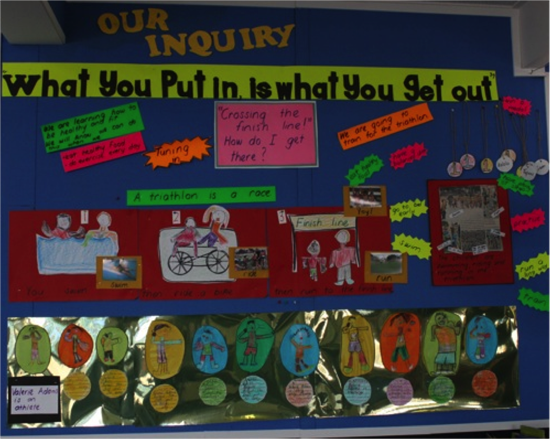There are several purposes for a key competencies wall:
- a place to show what students, teachers, and others have observed
- a place to build up evidence over a year
- a way of showing key competencies in a range of situations.
In this video, Barbara Ala'alatoa, Glenis Hanline and Ngamihi Masaga talk about the work they have done to grow their ability to make judgments about children’s development in the key competencies.
There are also a number of challenges involved in ensuring ‘the wall’ goes beyond the wall displays of the past, to reflect the best of key competencies. One challenge is for the wall to hold really interesting examples of learners demonstrating the key competencies.
A key competencies wall can play an important part in the ‘all day and anytime’ idea – the Sylvia Park team talk about focusing on key competencies not only during the school day but also before and after school. The wall could include evidence of learning from anytime, and is a place that should be a living record of learning, rather than a static display of something that happened in the past.
The Sylvia Park team also talk about the trial and error they have gone through. So what else might we try and keep in mind in creating a KC wall?
- Promoting partnerships with parents by encouraging parents to contribute to, and comment on, the wall.
- Ensuring that the creation of the wall promotes, rather than just shows, students’ key competencies – so students should be the key creators of the wall (rather than the teacher) and be encouraged to take a lead in developing the wall.
- Showing development of key competencies, rather than just end products, is important. It is important to see the germ of an idea, the first draft or image of the initial attempt, as well as what follows.
- A range of contexts should be evident on the wall – things that happened in the school and also at home, in the local community, and beyond.
- Annotations, notes or comments are important to highlight key competencies – this requires teachers and students to know about and draw on different language to express the important ideas about, for example, thinking.
- The focus may be about the key competencies specifically, or another focus that also shows key competencies.
- Being a work in progress rather than an archive is important for a KC wall – it would be a place to demonstrate learning and ongoing thinking. The wall should be constantly added to and developed – new thoughts, questions and queries could be added over time.
Discussion prompt
How might your own KC wall, or the ones shown here, be developed further?
Use the list of points above to prompt your discussion.
Return to top

